We are wandering through the old city in Seville (Sevilla in Spanish), the capital of Andalusia, Spain, and we are lost.
It is our third night in Seville, and being lost here is a surprisingly pleasant feeling. Each corner of the old town brings yet more wonders and even now, past ten in the evening, the sky is glowing blue and the streets are alive with the chatter and activities of friendly locals. The centuries-old labyrinthine streets twist and turn, sometimes so slowly that the direction gradually changes from east to south, or west or north, unbeknownst to even the most seasoned traveller.
This city has a long and varied history. Seville was founded as the Roman city of Hispalis, and ancient Muslim, Jewish and Christian influences come together to create a uniquely beautiful town with spectacular Medieval, Moorish, Gothic, Renaissance and Baroque architecture. Seville boasts some truly impressive landmarks, including the Islamic-style Real Alcázar (Royal Palace), still in use by the Spanish royal family, and the nearby Cathedral of Seville, both UNESCO World Heritage Sites. The cathedral of Seville (pictured below) is the largest Gothic cathedral in the world, and the world’s third largest church, reportedly built to demonstrate Seville’s wealth after becoming a major trading center in the years after the Reconquista (and later, thanks to the devastating conquering of the gold and silver-rich Incas in the 1500s). The construction of this awe-inspiring site dates back to 1184, with the La Giralda tower – a former minaret converted to the bell tower. The cathedral houses 80 chapels and has the longest nave of any church in Spain, with the central nave rising 42 meters in the air, lavishly decorated with a large quantity of gilding. Here you will find the alleged resting place of Christopher Columbus, the Italian explorer who died in Spain in 1506.
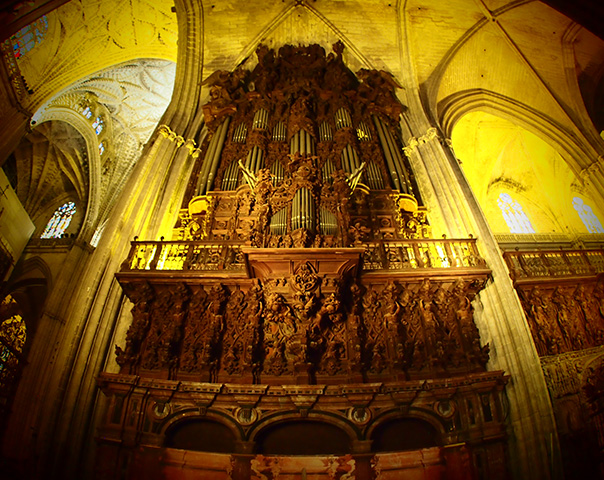
The romantic Renaissance Revival-style Plaza de España (at top of page), built in 1928 for the Ibero-American Exposition and now housing Seville town hall and military quarters, is one of Spain’s most beautiful icons. Here you will find brightly tiled pavilions, ponds, fountains, and bridges over an idyllic moat, where you can paddle at your leisure. The only traffic allowed here, apart from pedestrians, are the horse drawn carriages popular with tourists (for 45 Euros we were given a long, interesting and thoroughly worthwhile tour through the old areas, to the delight of our young daughter). The overall effect of Plaza de España and the surrounding gardens is that of a fairytale. Go at sunset to enjoy this special place while it is lit with golden sunlight. And bring your camera.
Only fifteen minutes by car from main streets of Seville you will find the small village of Santiponce, which boasts a spectacular, half-ruined monastery and the heritage listed ruins of Italica, an ancient Roman city founded in 206 BC by general Publius Cornelius Scipio Africanus in order to settle Roman soldiers wounded in the Battle of Ilipa. It is the birthplace of Hadrian, and an important historical landmark, still being excavated by archeologists. Arguably the most impressive of Italica’s ruins to explore is the Roman amphitheater, which once seated 25,000 spectators, where you can walk the arena and tunnelled hallways the gladiators once walked. (My daughter and I are pictured standing near the pits of the amphitheater, below.)
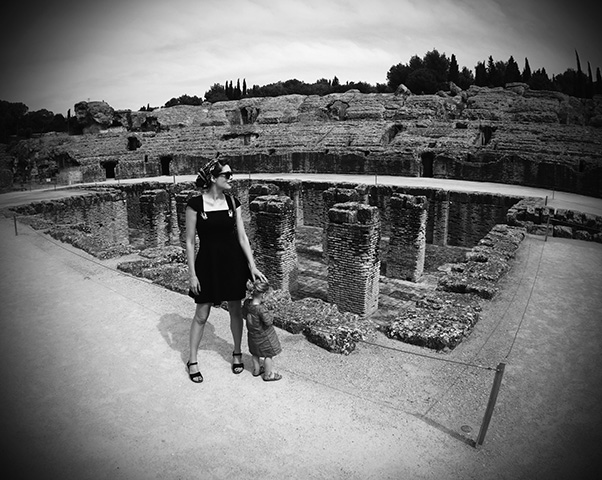
With a combination of exchange rate and economic differences being favourable for the Australian traveller, (2 Euro, or $2.85 AUD, will buy you a small plate of tapas in many restaurants, or a 6 pack of beer at the supermarket, for instance) it is possible to live on very little in Seville, while enjoying life the way the locals do – on the streets in cafes, bars and stunning parks. The hotels are also very affordable. We stayed at the small boutique Hotel Alcoba del Rey de Sevilla, where according to legend, the poet king of Seville, Al-Mutamid hid his washerwoman lover Rumaykiyya from his father nearly one thousand years ago. The hotel has been renovated over the years to include all the modern conveniences, while maintaining old-world charm. We found the staff extremely friendly and helpful. The restaurant downstairs is frequented by locals and makes delicious food at affordable Spanish prices – not tourist prices. You can eat like a king or queen (or their lover) for 15 Euros per person, including three courses and drinks. For a few Euros extra, they will serve you on the hotel’s beautiful terrace. The hotel is located next to the famous Basilica of Our Lady of Hope Macarena (Below, next to the Macarena gate).

My watch says it is now past eleven, yet the streets are filled with couples holding hands, locals socialising, and families pushing prams. The playgrounds in every plaza are filled. The night is lit with lamps and smiles and chatter. Children play. This is a place that must be seen and experienced. Three days has barely been enough. I recommend getting lost in Seville – figuratively or even literally. You won’t regret it.
* Photographs copyright of Tara Moss & Berndt Sellheim, 2013.

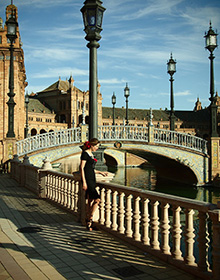
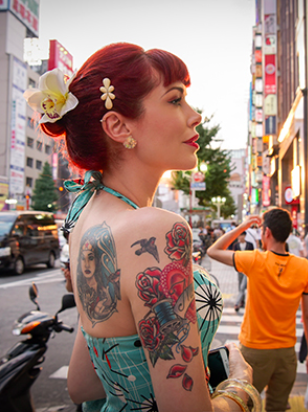
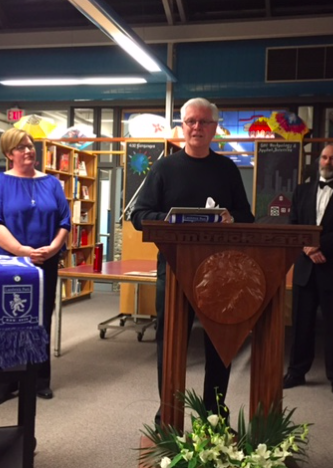
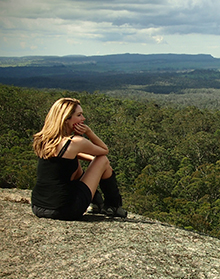
How lovely to read of your adventures there. I spent the whole summer of 92 in Seville (working at the Expo) and really, the tapas there are the best! And I always remember the streetlife and the kids up til all hours of the night. Such a different culture.
Me encanta que te guste mi ciudad. ¡ Eres bienvenida siempre que quieras volver! Saludos , de una sevillana. Espero que tengas suerte con el lanzamiento de tu último libro ” Te encontraré”.
Hello Tara, love your television shows about the bad guys of yesterday and when l accidentally found a link to your blog l just had to come and take a look. This post got my attention as it was about you spending 3 x nights in ‘Seville’
Well silly me, l thought you were talking about the same Seville l drove through just a few days ago…. it is also a lovely area, but slightly greener and less bright lights, concrete building and amazing buildings.
The Seville l am talking about is obviously very different to the Seville you are talking about. For those who are wondering which Seville l drove through just a few days ago….. It is in Victoria, in a North East direction from Melbourne, and behind the Dandenongs.
I should say, the pictures of your Seville are very beautiful and it looks like a place with much to offer anyone interested in travel and beautiful places.